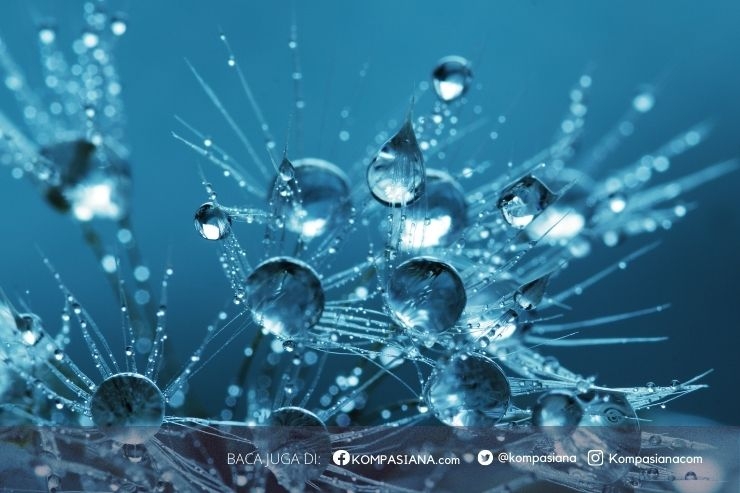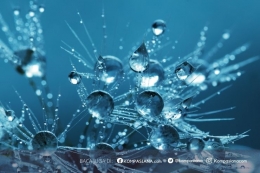Introduction
Diving is an underwater activity using a respirator instrument, such as air is pumped from the surface, SCUBA (Self Contained Underwater Breathing Apparatus) or without the aid of respirator instrument at all, such as breath-hold. Diving in the open ocean is known to have a higher health risk than diving in a lake or in the pool. Further discussion in this paper is diving regarding the use of SCUBA in the open ocean.
Diving-related health risks are divided into two main categories: first, environmental risks and the second, the depth and duration of dives. The open ocean environment is a unique ecosystem with stunning, colorful plants and animals owned. This condition makes the divers tend to dive for longer than it should. There are also certain animals are dangerous or scary that makes the diver ascent to the surface too quickly. The longer the diver to dive, the increasing health risks. Similarly, the depth of the dive, the deeper the dive, increasing health risks for divers. Divers must learn the rules of diving before diving.
Decompression sickness (DCS)
SCUBA (Self Contained Underwater Breathing Apparatus) is a modern respirator instrument that allows divers to dive deeper and longer. Composition of the gas in the tank is usually no different than the composition of the gas in normal air. In the higher pressure, oxygen and nitrogen more easily dissolved in body fluids increase the risk of nitrogen narcosis or when it has passed the saturations of oxygen increase the incidence of oxygen toxicity. Actually, dissolved nitrogen is not ‘really completely dissolved into a liquid’, but in fact there is still in a bubble of nitrogen form, in the smallest diameter that will not harm the body. However, the rapid ascent of the diver to the surface, tiny bubbles of nitrogen will form a bubble with a larger diameter (due to the merging of several small bubbles) and cause symptoms. This phenomenon is called decompression sickness (DCS). DCS manifestations vary from very mild form of redness and itching of the skin to a state of unconsciousness. The severity of DCS is highly dependent on the depth and duration of the dive. The slower getting the right therapy may lead to disability or death. Diving science has been able to predict DCS occurrence, so such prevention can be done. Yet sometimes rarely the DCS can occur in individuals who dive within the limits of normal.
Cerebral air gas embolism (CAGE)
CAGE is a health risk diving. Symptoms include arm-leg paralysis, or stroke-like symptoms. CAGE is caused by the formation of air bubbles in the blood vessels of the brain. Causal mechanism is still unclear, and CAGE risks not associated with the depth and duration of the dive. So CAGE can occur at any depth and dive at any moment.
What is hyperbaric oxygen therapy?
Hyperbaric oxygen therapy (HBOT) is a medical treatment using inhaled pure oxygen through a face mask in a pressurized air chamber with a pressure of 1.4 ATA (atmospheres absolute) or more. In 1 ATA, the partial pressure of gas component consists of 20-21% oxygen and 79-80% nitrogen. The pressure of 2.4 ATA using 100% oxygen, the oxygen partial pressure increased to 240%.
What is the purpose of diving related HBOT?
1. HBOT for divers who dive regularly in a certain period. This type of goal is called "nitrogen wash-out". Our bodies are theoretically made up of several compartments of the body. Although divers dive carefully follow the rules, the risk of nitrogen trap in body compartments are still happening. Divers who regularly dive on a regular basis also require HBOT.
2. HBOT is the primary therapy for DCS and CAGE. HBOT as a primary therapy DCS and CAGE have been approved by the FDA. Mechanism of HBOT to treat diseases that describe later.
3. HBOT as an oxygen booster. Aquatic environment is not a normal environment for the human body. Repetitive dives may decrease the ability of gas exchange in the alveoli and the relative will reduce the pressure of oxygen in tissues. The same condition happens to frequent flyer (pilots, flight attendants and passengers), mountain sports, coal miners and the elderly. Objectively on the adequacy of tissue oxygen tension was measured using transcutaneus oxygen pressure (TcPO2).
HBOT and decompression sickness
The very first decompression sickness treatment is done by ‘in water recompression’ to a certain depth with a period of time at sea. In this way ‘the sinking back treatment’ is an acceptable treatment at the time because DCS is diving-related illness. However, given the low success rate and the condition of DCS patients are sometimes not possible (nor allowed) to sink back, then the primary therapy and the only one therapy known until today is HBOT. HBOT is mimic ‘the sinking back treatment’ using methods of 'dry dive' and play an important role in the treatment of DCS. Pressurized air will make the diameter of air bubbles smaller. One hundred percent of oxygen would reverse hypoxia of the tissue. Oxygen also acts as a 'nitrogen displacer’ and quickly removes nitrogen from the body.
What is the procedure performed for patients HBOT DCS?
HBOT performed for 4-5 hours or longer for patients with DCS. HBOT dive depth of about 60 feet of sea water (fsw). Your doctor or nurse acts as a 'dive officer' inside hyperbaric chamber to monitor the patient's condition. Emergency team also prepared for this situation. HBO success rate is highly dependent on timing of HBOT. The shorter the time between the occurrences of DCS with the arrival of the Hyperbaric center, the higher level of therapeutic efficacy.
In summary, in dive-sites around the world, the existence of HBOT center is a must as a part of diving safety destination. And Indonesia is now become part of it.
Dr. dr. E. Hagni Wardoyo, Sp.KL., Subsp.PH(K)
Spesialis Kedokteran Kelautan, Konsultan Penyelaman dan Hiperbarik
Dive-enthusiast
DAN referral phycisian
Program Pendidikan Dokter Spesialis Kedokteran Kelautan
FK Universitas Mataram/ Hyperbaric center RSUD Kota Mataram
Baca konten-konten menarik Kompasiana langsung dari smartphone kamu. Follow channel WhatsApp Kompasiana sekarang di sini: https://whatsapp.com/channel/0029VaYjYaL4Spk7WflFYJ2H







